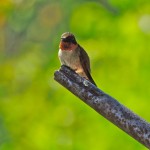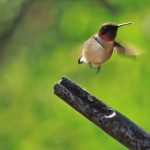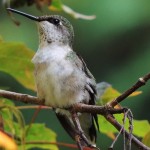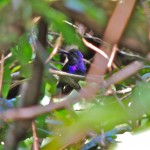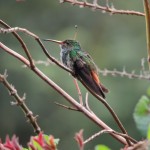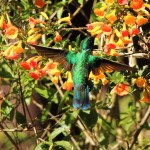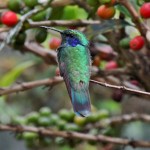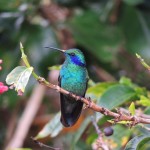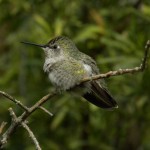21 July 2015. Burlington ON. Are these the dog days of summer? I think so and Wikipedia agrees, defining them as the sultry days of July and August. It’s not much of a time for active birding but, from my back door, I still hear the two wrens I referred to a month or so ago. The Winter Wren sings just as stridently every morning and I caught a glimpse of him today, he may even have adopted the few backyard gardens immediately south of us as his own
This evening as we enjoyed a late outdoor dinner we both caught a slip of movement along fringe edge of an old cedar, in unison we exclaimed, ‘Hummingbird!’ We don’t see many in this urban jungle – but then, I suppose if we can get Winter Wrens, then why not a Ruby-throated Hummingbird? We followed it for a minute or so as it sipped from the dusty-blue flowers of Russian Sage until it buzzed overhead and landed behind us on an almost invisible twig. It seemed to be willing us to go away, and then I realized that’s exactly what it was waiting for, we were sitting too close to our wonderfully chaotic tangle of storm-battered Scarlet Bee-balm or Monarda didyma. Those bright tubes almost certainly hold what the hummingbird wanted to get at.
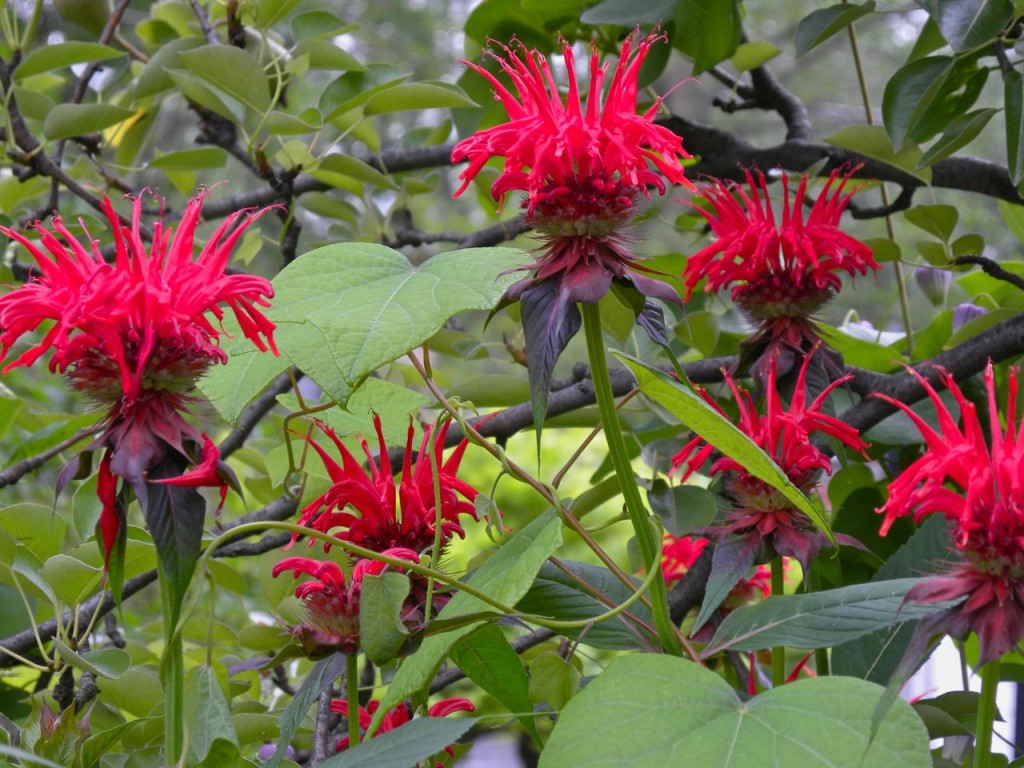
Last January, I wrote at some length about the hummingbirds I met in Panama. It is a large family of over three hundred species, arguably centred in Ecuador and well represented throughout Latin America. So it is, in my humble opinion, something of a privilege that a member of this extraordinary New-World family of birds should grace us with their presence every summer.
They are incredible creatures in so many ways: tiny with the metabolism of a jet fighter; only better: they fly backwards with ease; they use grams of sugar as fuel not mega-litres of jet fuel; and they make annual round-trip journeys between tropical Central America and Ontario without paperwork. Like anything Boeing or Lockeheed Martin builds, they carry an on-board navigation system for those transcontinental journeys, but of a complexity and sophistication that we scarcely understand. It is quite possible that they steer by the stars and by visualizing and processing the relative angles of the mesh of lines of polarity of the Earth’s magnetic field; you try it.
So any time a hummingbird comes into view, it should be a time to marvel; if nothing else at their apparently effortless up-down-forward-backward flight. I’ve added a couple of galleries of some of my photos from different times and places. They’re visible only on the website, not if you’re reading this as an email.
